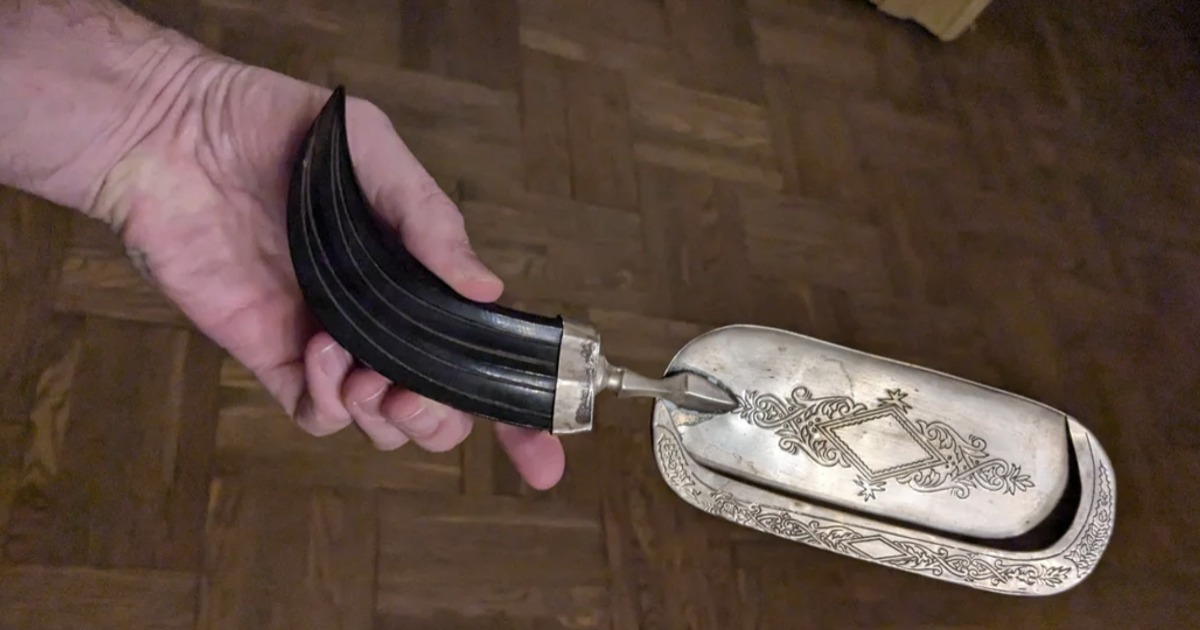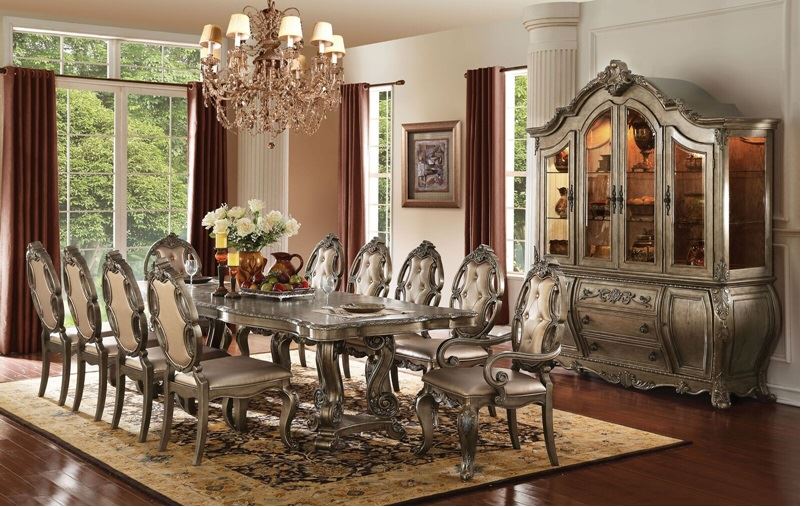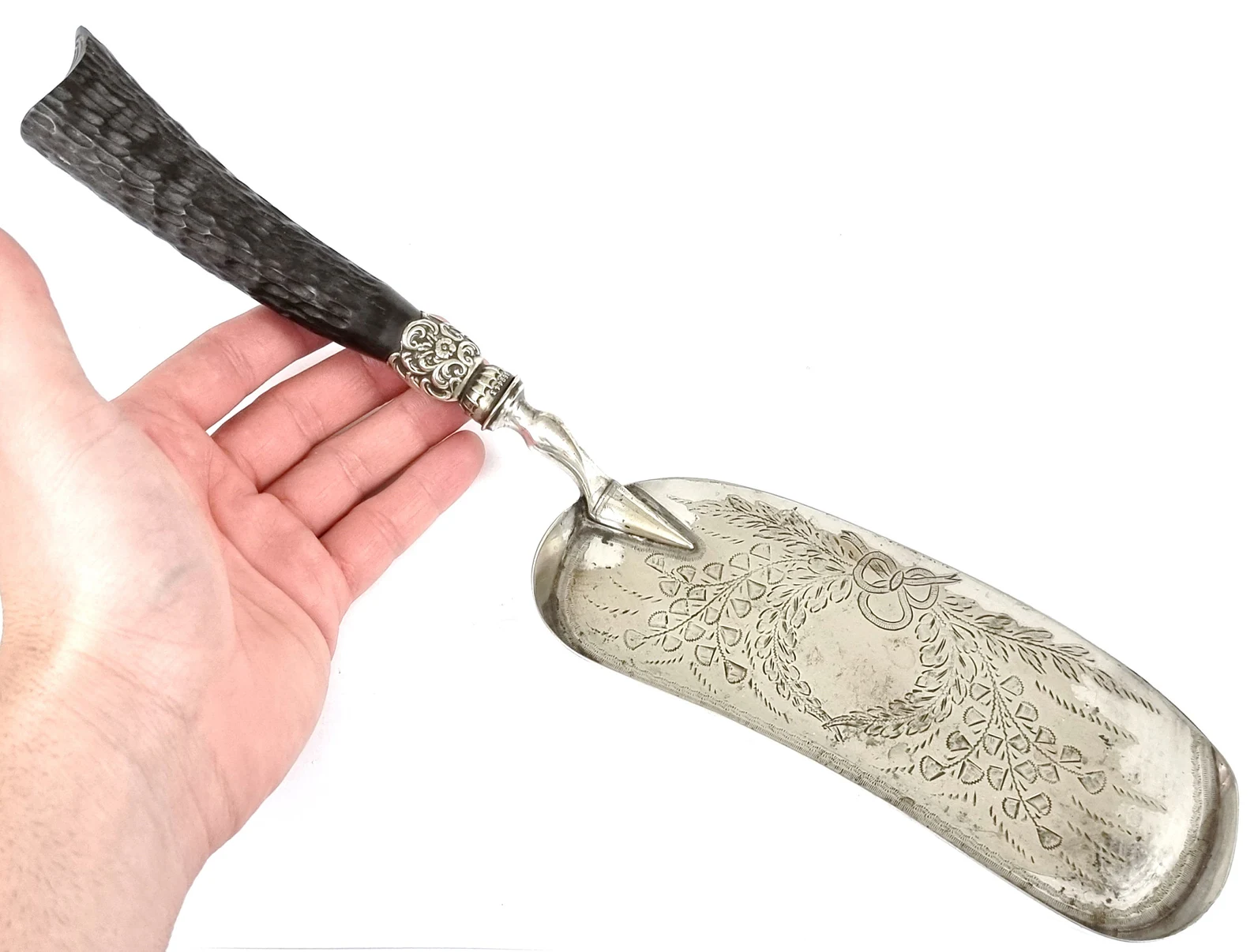The Tiny Detail That Made a Big Impact in Every Home

Source: Reddit
There’s something charming about gathering around the dinner table, where the clinking of silverware fades into the background of conversations, and laughter fills the room. For many of us, there’s a nostalgic memory tucked away, perhaps of sitting at a grandparent’s table after a meal, watching them ceremoniously clear away the crumbs from the pristine tablecloth with a delicate tool. It was a simple act, but for some reason, it felt important—like a quiet moment of grace at the end of a meal. The tool they used, likely a crumb scoop, was a small but significant part of dining etiquette in many homes—a symbol of a time when even the smallest details of hospitality were polished with care.
The crumb scoop, like the one I recently stumbled upon in Italy, was once a staple in households that valued the finer points of formal dining. These scoops, often made of silver or other polished metals, were used to gently sweep away crumbs from the tablecloth between courses. They typically came as part of a set with a matching tray, and the artful designs etched into their surfaces spoke to their dual purpose—functional yet decorative.
Imagine a grand dining table, its long surface adorned with the finest linen and china. As guests enjoyed course after course, the host would discreetly tidy the table with a crumb scoop, a gesture that kept things pristine and added an extra touch of elegance to the meal. Today, the formality of such an act may seem distant, but there was a time when maintaining this level of polish in the home was a matter of pride and hospitality.

The crumb scoop reflects a moment in history when dining wasn’t just about nourishment—it was an event. The Victorians, in particular, placed a great deal of emphasis on formal dining rituals. These meals were a display of status, manners, and refinement. Every detail mattered, from the arrangement of the silverware to the smooth removal of errant crumbs that dared to land on the tablecloth.
In the late 19th and early 20th centuries, the art of dining extended beyond what was on the plate; it was about presentation and the seamless flow of a meal. A crumb scoop allowed hosts to maintain the immaculate appearance of the table, ensuring that their guests felt comfortable and valued. The cultural importance of such tools reveals how much attention was paid to the dining experience—a stark contrast to the fast-paced, casual meals of today.

As I held the crumb scoop in my hand, admiring its ornate handle shaped like a horn and its finely engraved tray, I couldn’t help but think about how much has changed. The ritual of sweeping away crumbs between courses has largely disappeared, and with it, a small piece of the art of dining. But that’s not to say it’s lost forever. These tools serve as a reminder of an era when time slowed down for meals, when the small moments—like clearing the table with a delicate scoop—were appreciated and imbued with a sense of occasion.
These days, life is fast, and meals are often rushed, but rediscovering items like the crumb scoop brings back the warmth of those slower moments. The scoop, like many vintage items, connects us to a time when dining was about more than just eating—it was about savoring not just the food, but the company, the setting, and the experience itself.

So, here’s to the humble crumb scoop, a tool that may seem obsolete in today’s world but carries with it the essence of another time. It invites us to reflect on the art of hospitality, the importance of those little details, and the joy of taking a moment to clear the crumbs and start anew—both in dining and in life. Who knows? Perhaps the next time you sit down to a meal, you’ll think of this graceful tool and feel inspired to bring a bit of that old-world charm back into your home. After all, it’s not just about sweeping away crumbs—it’s about sweeping away time and reconnecting with the elegance of the past.